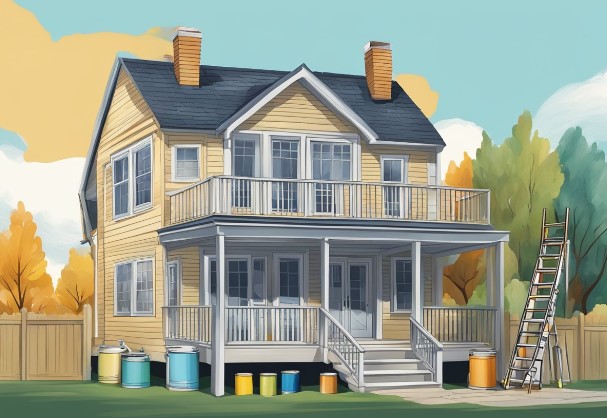House painting can be a daunting task, especially for those who have never done it before. Homeowners who want to update the look of their homes may be wondering whether to do it themselves or hire a professional painter. While both options have their advantages and disadvantages, it ultimately comes down to the homeowner's budget, time, and skill level.
Assessing the project scope is the first step in determining whether to DIY or hire a professional painter. Small projects such as painting a single room or accent wall can be done by homeowners with some painting experience. However, larger projects such as painting the entire exterior of a home may require the expertise of a professional painter. It is important to consider the time and effort required for the project and whether the homeowner is willing to invest in it.
Choosing the right paint and color is also crucial in achieving the desired look for the home. Homeowners who opt for DIY painting should research the different types of paint available and ensure that they have the necessary tools and equipment. On the other hand, professional painters have the expertise to recommend the best paint and color for the home. Overall, the decision to DIY or hire a professional painter should be based on the homeowner's budget, time, skill level, and project scope.
Key Takeaways
Assess the project scope before deciding whether to DIY or hire a professional painter.
Choose the right paint and color for the home to achieve the desired look.
Consider the homeowner's budget, time, skill level, and project scope when making the decision to DIY or hire a professional painter.
Assessing the Project Scope
Before deciding whether to DIY or hire a professional for your house painting project, it is important to assess the scope of the project. This will help you determine whether you have the necessary skills, tools, and time to complete the project yourself, or whether it is best left to the professionals.
Evaluating Wall Conditions
The first step in assessing the project scope is to evaluate the condition of the walls to be painted. If the walls are in good condition, with no major cracks, holes, or other damage, then the project may be suitable for a DIY approach. However, if there is significant damage to the walls, such as water damage or large cracks, then it may be best to hire a professional to ensure that the repair work is done properly before painting.
Estimating Time and Budget
Another important factor to consider when assessing the project scope is the amount of time and budget required to complete the project. DIY painting projects can be time-consuming, especially when you factor in the time required for prep work, such as cleaning, sanding, and taping. It is important to estimate how much time you will need to complete the project, and to ensure that you have the necessary tools and materials on hand.
When it comes to budget, DIY painting projects can be more cost-effective than hiring a professional, but this is not always the case. It is important to estimate the cost of materials, such as paint, brushes, and other supplies, as well as any rental costs for equipment, such as ladders or scaffolding. Additionally, if the project is large or complex, it may be more cost-effective to hire a professional who can complete the project quickly and efficiently.
Overall, assessing the project scope is an important step in deciding whether to DIY or hire a professional for your house painting project. By evaluating the condition of the walls and estimating the time and budget required, you can make an informed decision that will ensure a successful outcome for your project.
Choosing the Right Paint and Color
When it comes to painting a house, choosing the right paint and color is crucial. The right paint can make a room look brighter, larger, and even more luxurious. Similarly, the right color can set the tone for the entire house and create the desired ambiance.
Types of Paints
Before selecting a paint color, it is important to understand the different types of paints available. The most common types of paints are oil-based and water-based. Oil-based paints are more durable and provide a smoother finish, but they take longer to dry and produce strong fumes. Water-based paints, on the other hand, dry faster and have fewer fumes, but they are less durable.
Another important consideration is the sheen of the paint. The sheen refers to the level of glossiness of the paint. The most common sheens are flat, eggshell, satin, semi-gloss, and high-gloss. Flat paint has no shine and is best for hiding imperfections, while high-gloss paint is shiny and reflects light, making it ideal for highlighting architectural details.
Selecting Color Schemes
Selecting the right color scheme can be overwhelming, but there are a few things to keep in mind. First, consider the purpose of the room. For example, a bedroom should have a calming color scheme, while a home office should have a more energizing color scheme.
It is also important to consider the existing decor and furniture in the room. A color scheme should complement the existing elements in the room, rather than clash with them. Finally, consider the overall style of the house. A modern house may benefit from a bold color scheme, while a traditional house may benefit from a more muted color scheme.
In conclusion, choosing the right paint and color is an important aspect of house painting. By understanding the different types of paints and selecting the right color scheme, homeowners can create a beautiful and cohesive living space.










